HelpWire vs Remote Desktop Connection: Choosing the Right Remote Access Tool
Prompt remote IT support is possible today because of remote access software. This article compares HelpWire, a free, cross-platform remote support solution, with Remote Desktop Connection (RDC), a built-in Windows feature. Read on to determine their respective features, security measures, and prices.
Overview: HelpWire and RDC
Both HelpWire and Remote Desktop Connection are excellent tools for businesses to deliver real-time remote support to clients.
For multi-platform environments and a no-cost remote support service, HelpWire stands out with its user-friendly features tailored for fast and effective IT support. On the other hand, Remote Desktop Connection is a reliable, Windows-native option best suited for IT professionals experienced with manual configuration.
We recommend HelpWire if you’re looking for a hassle-free, cross-platform tool for remote support and client interaction. But if you’re operating exclusively within a Windows network and have the resources to manage VPN or firewall configurations, RDC may be the better fit.
| Feature | HelpWire | Remote Desktop Connection (RDC) |
|---|---|---|
| Purpose | Remote support to any platforms |
Windows-centric remote support
|
| Platform Support | Windows, macOS, Linux | Windows only |
| Cost | Free | Free (native in Windows machines) |
| Setup Complexity | Simple, no required configuration | Difficult, requires network setup and configuration |
| Use Case | Best for IT support, SMBs, and personal use | Suitable for accessing Windows PCs within a network |
Features and Functionalities
HelpWire
HelpWire offers a modern feature set designed specifically for remote support. With capabilities like built-in chat, unattended access across platforms, and seamless file transfer, it caters to both technical specialists and support teams. Its client and team management tools also make it scalable for businesses managing multiple technicians or clients.
Remote Desktop Connection (RDC)
The Remote Desktop Connection (RDC) suite of functionalities is designed for Windows-constrained environments. Currently, RDC lacks a file-sharing interface and session collaboration. But if properly configured, RDC can provide a fast and reliable remote connection within a local network or VPN.
Shown below is a table that compares HelpWire’s and RDC’s key features.
| Feature | HelpWire | RDC |
|---|---|---|
| Remote Access & Control | ||
| File Transfer | Limited (via clipboard) | |
| Built-in Chat | ||
| Session Recording | ||
| Multi-Monitor Support | ||
| Unattended Access | ||
| Client Management | ||
| Team Management | ||
| Cross-Platform Support |
User Interface
HelpWire
HelpWire’s clean and intuitive interface makes it a beginner-friendly remote support software. Its UI is designed to help users launch sessions in seconds without technical configuration.
Remote Desktop Connection (RDC)
Operating System Compatibility and Support
HelpWire’s cross-platform compatibility makes it an excellent option for diverse environments, while RDC is limited to Windows systems.
| Operating System | HelpWire | RDC |
|---|---|---|
| Windows | ||
| macOS | ||
| Linux |
Security
Both software support secure remote connections, but HelpWire delivers a more stringent and top-level security approach.
HelpWire
Remote Desktop Connection (RDC)
Performance and Speed
HelpWire
Remote Desktop Connection (RDC)
Meanwhile, many users claim that RDC’s performance is generally good on local networks albeit usually suffers over the Internet due to improper setup. This is because RDC requires manual configuration for optimal performance over external networks.
“I have used Windows Remote Desktop for a couple of years... The connection itself was great, I couldn't feel a difference from working directly on the notebook.” - Reddit user
In short, RDC performs well within local networks but may require additional configuration for remote access. HelpWire, on the other hand, offers an alternative to Remote Desktop Connection with optimized performance and minimal setup.
Use Case Suitability
HelpWire
HelpWire offers optimal flexibility and support for IT support teams, customer service operations, and remote work scenarios. It’s compatible with Windows, macOS, and Linux, which makes it highly reliable for businesses and professionals who need fast, user-friendly access to end-user machines without complex setup.
For enhanced utility and customer-focused service, HelpWire also comes with built-in chat and unattended access features.
Remote Desktop Connection (RDC)
IT professionals and system administrators may still opt for RDC when they are dealing with a Windows-based infrastructure. This tool performs well for personal use and remote work if properly configured, even if it is constrained by its Windows-only limitations.
Although it lacks modern, support-focused features, it makes up for it with seamless integration into the Windows environment and strong native performance on local networks.
| Use Case | HelpWire | RDC |
|---|---|---|
| IT Support | ||
| Customer Support | ||
| Remote Work | ||
| Personal Use | ||
| Cross-Platform Access |
RDC is better suited for Windows-constrained environments. However, HelpWire is a suitable remote desktop connection alternative for a broader range of use cases, such as multi-OS remote support and customer service situations.
Pricing
HelpWire provides a comprehensive free offering with essential features, while RDC serves as a basic built-in tool for Windows users.
| HelpWire | RDC | |
|---|---|---|
| Price | Free for both personal and commercial use | Free (included with Windows Pro) |
| Users | Unlimited | One-to-one connection |
| Features | All included: remote access, chat, file transfer, unattended access | Basic remote access |
| Limitations | None | Windows-only, setup required |
Pros and Cons
HelpWire
Pros
- HelpWire works seamlessly with Windows, Linux remote desktop, and macOS.
- Designed to scale fast with your business growth.
- Intuitive to set up and use.
- Built-in support chat feature.
- Responsive customer support.
- Options for easy and quick saving of client details.
Cons
- Lacks session recording features.
- HelpWire is a third-party app, so it requires installation.
Remote Desktop Connection
Pros
- RDC is native to Windows machines.
- Features stringent security in closed-network environments.
- Lightweight tool that runs with minimal memory.
Cons
- Constrained to Windows-only machines.
- Requires complicated manual port/VPN setup.
- Lacks modern support tools like chat, file sharing, and team management.
Frequently Asked Questions
No, RDC (Remote Desktop Connection) and RDP (Remote Desktop Protocol) are not the same tools, but are closely related. RDC is a native Windows application that enables users to remotely connect to another PC, whereas RDP is the underlying protocol (Remote Desktop Protocol) that powers the connection.
In short, RDP is the technology, and RDC is one of the tools that uses it.
Yes, RDC is encrypted by default using TLS. However, its security depends on proper configuration. It is recommended to enable Network Level Authentication (NLA) is for best protection.
RDC (Remote Desktop Connection) uses port 3389 by default for remote access via the Remote Desktop Protocol (RDP).
Absolutely. HelpWire is a 100% free remote support tool, devoid of hidden fees.
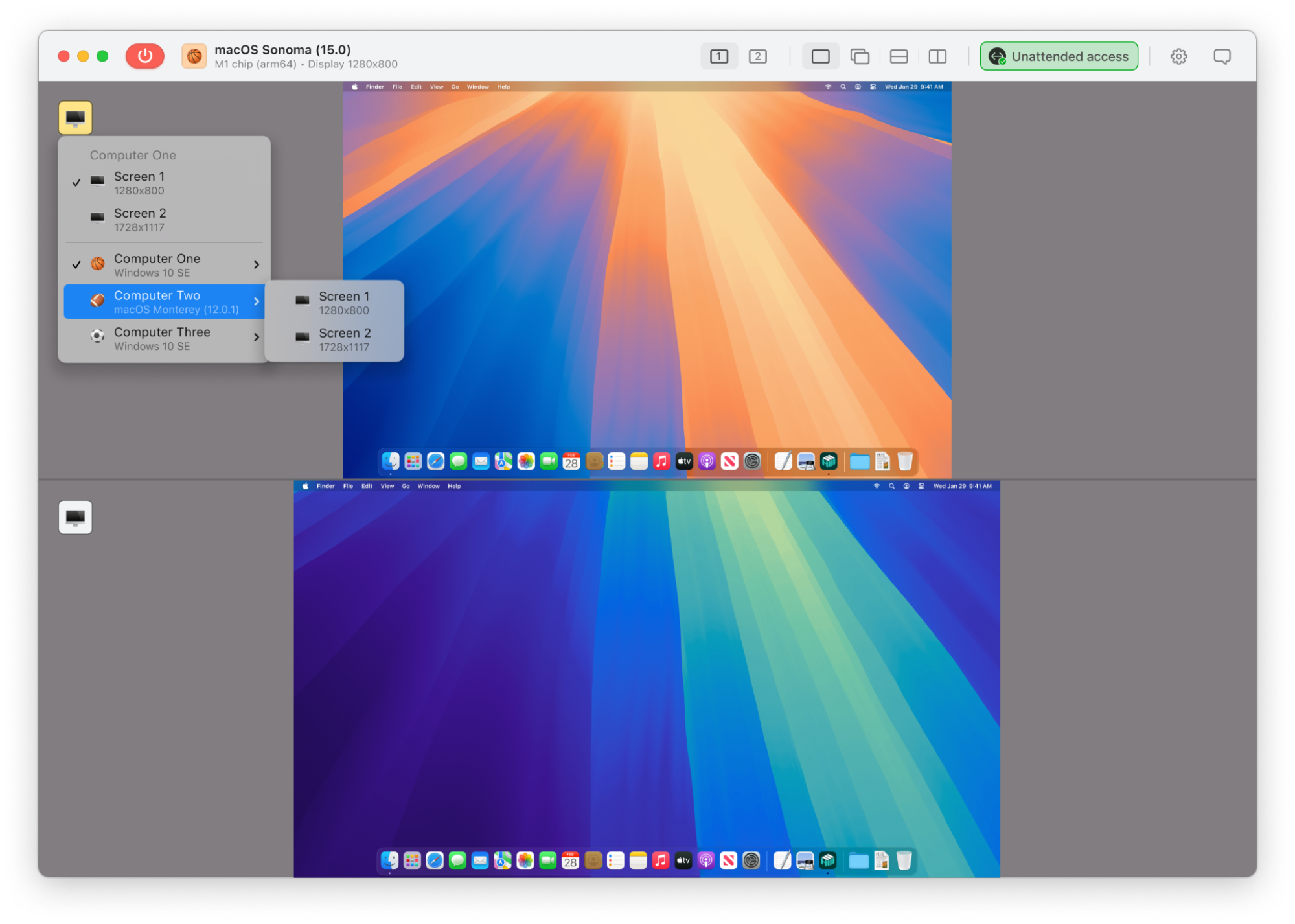
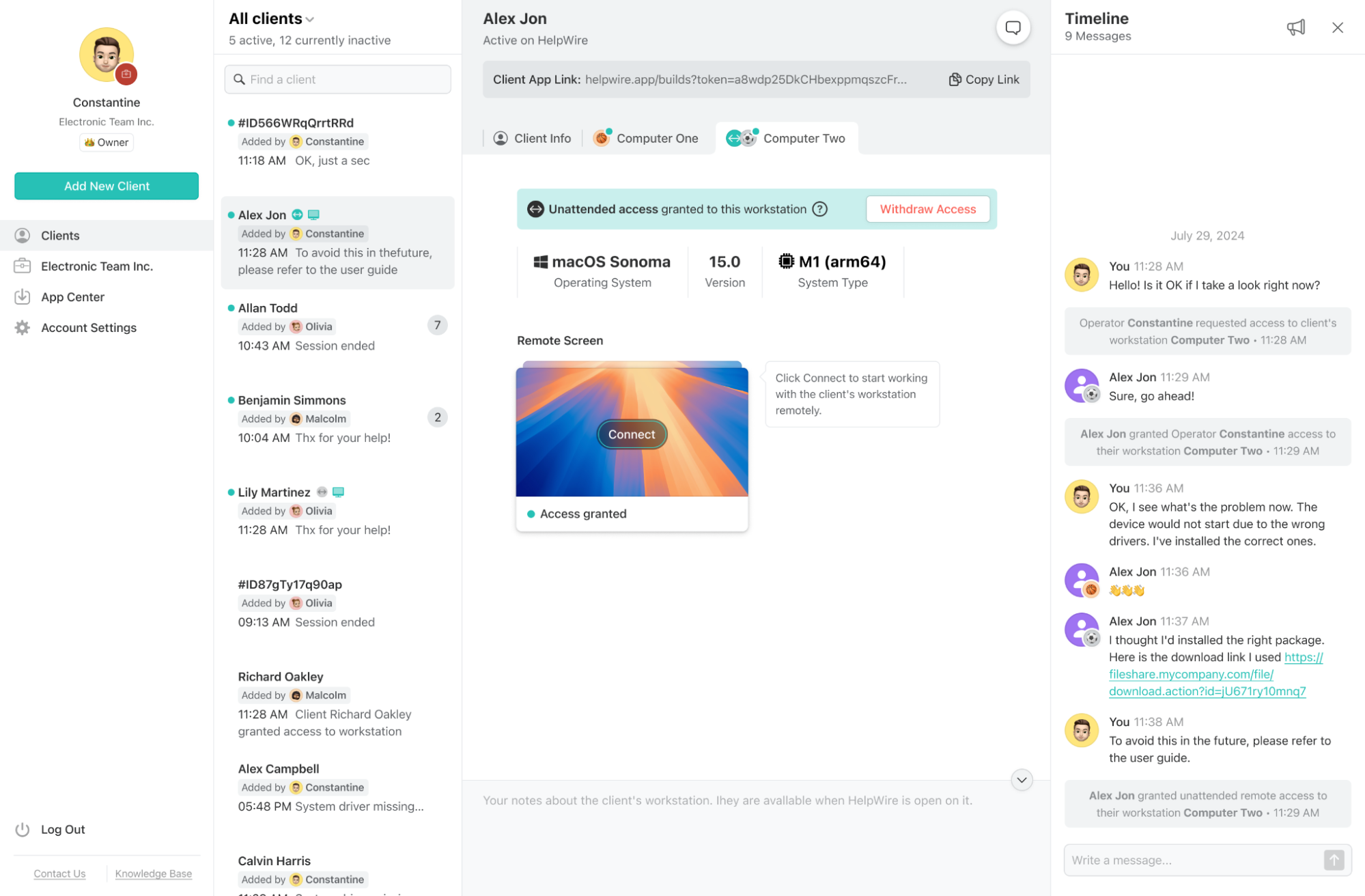
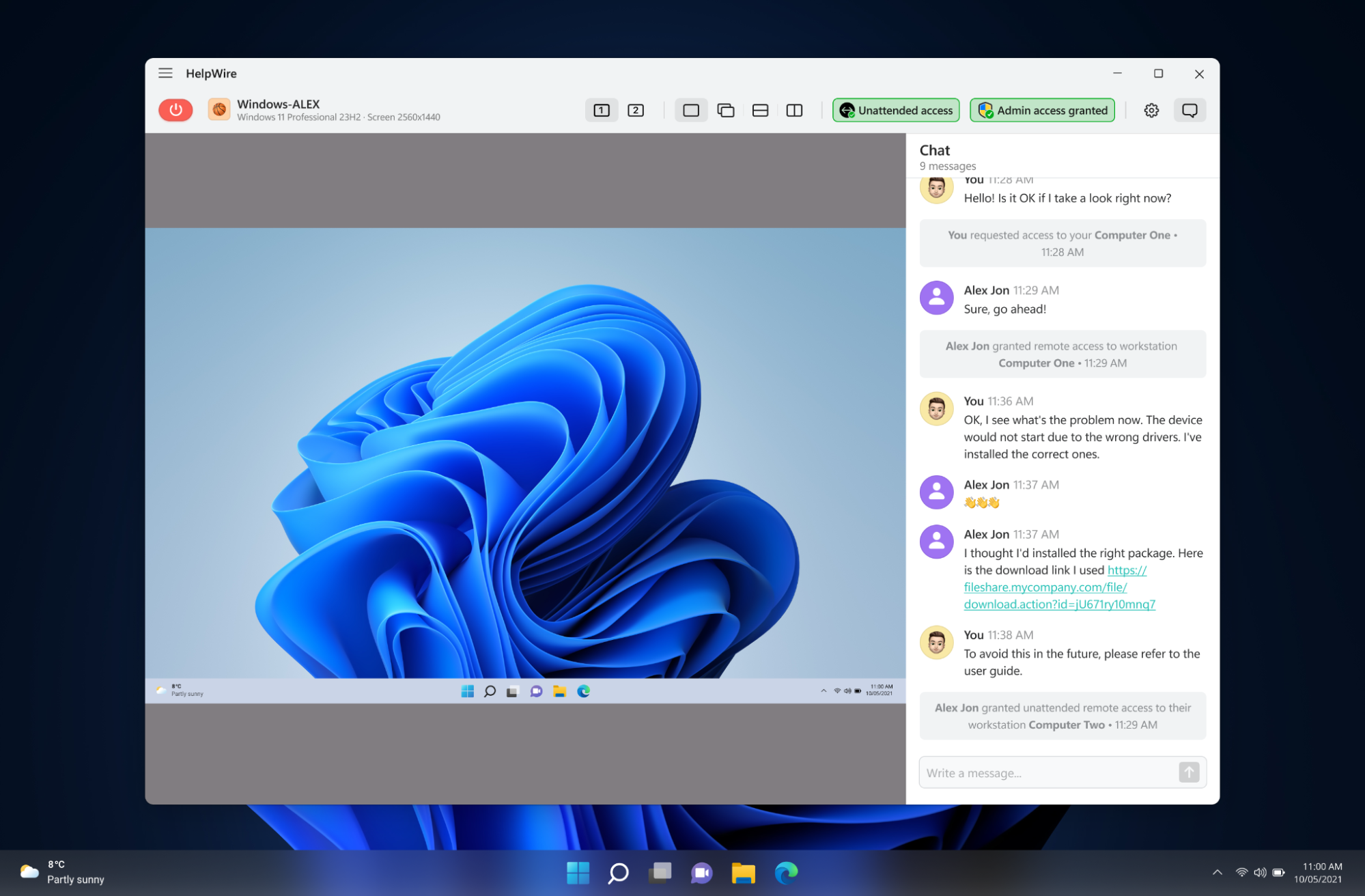
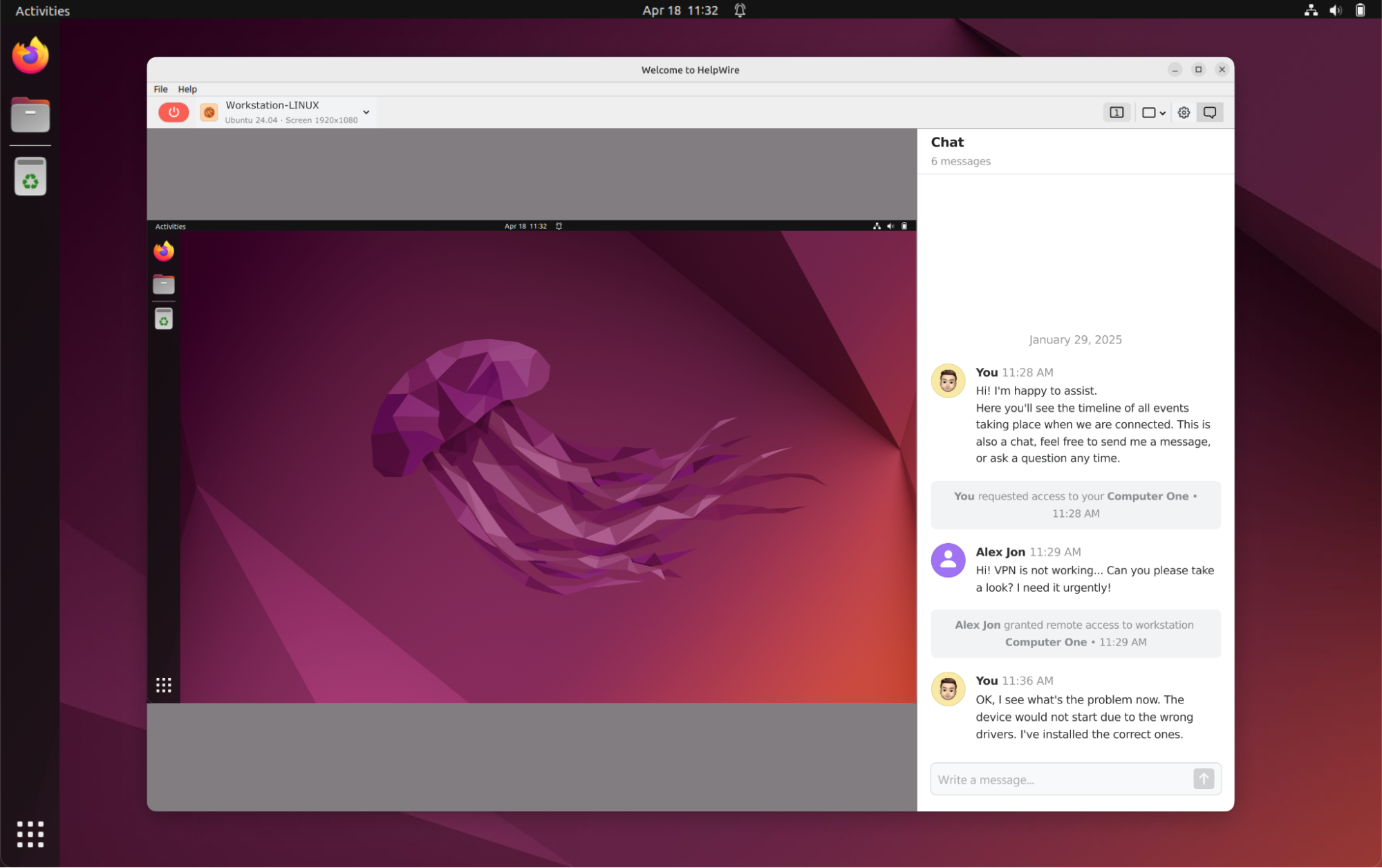
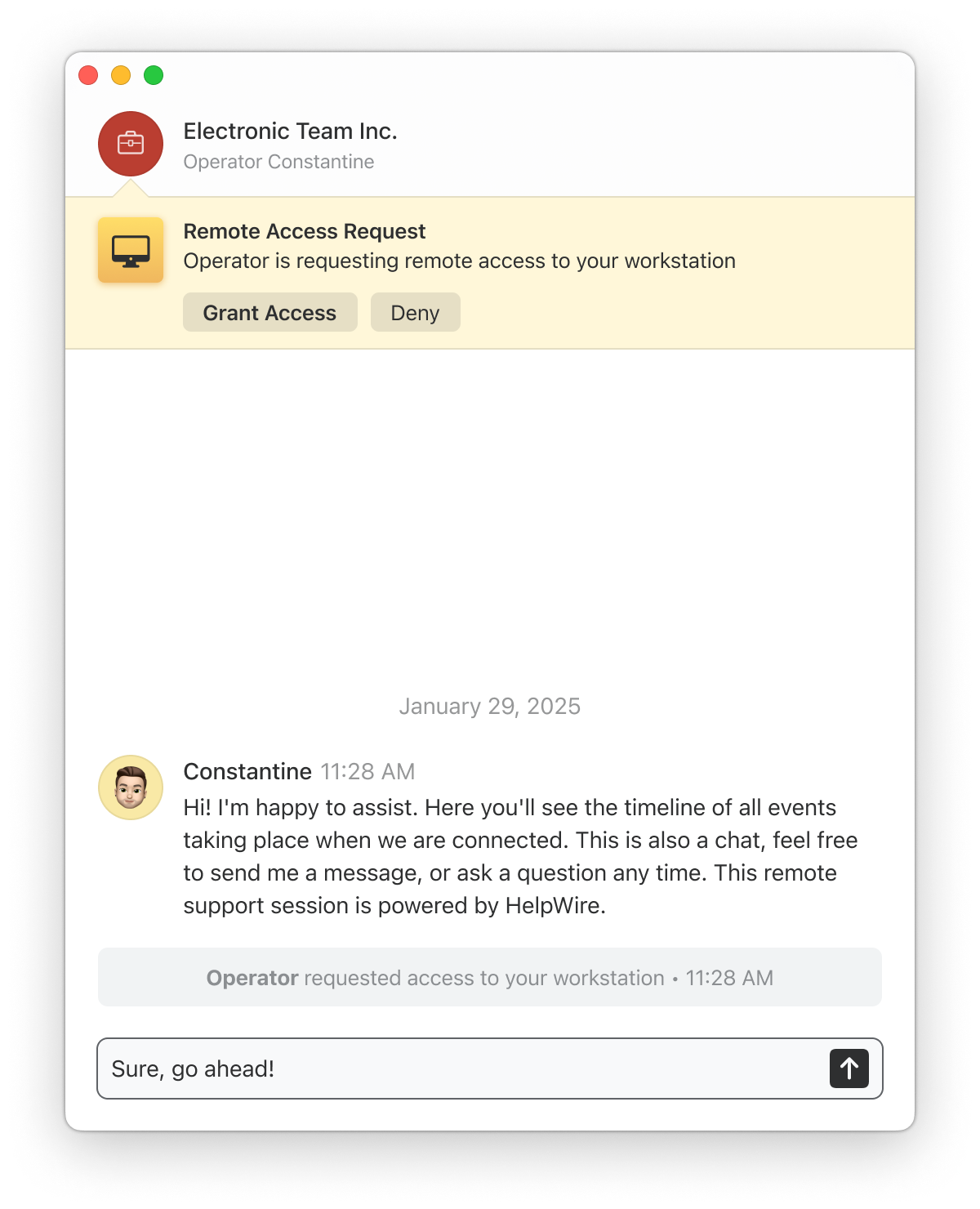
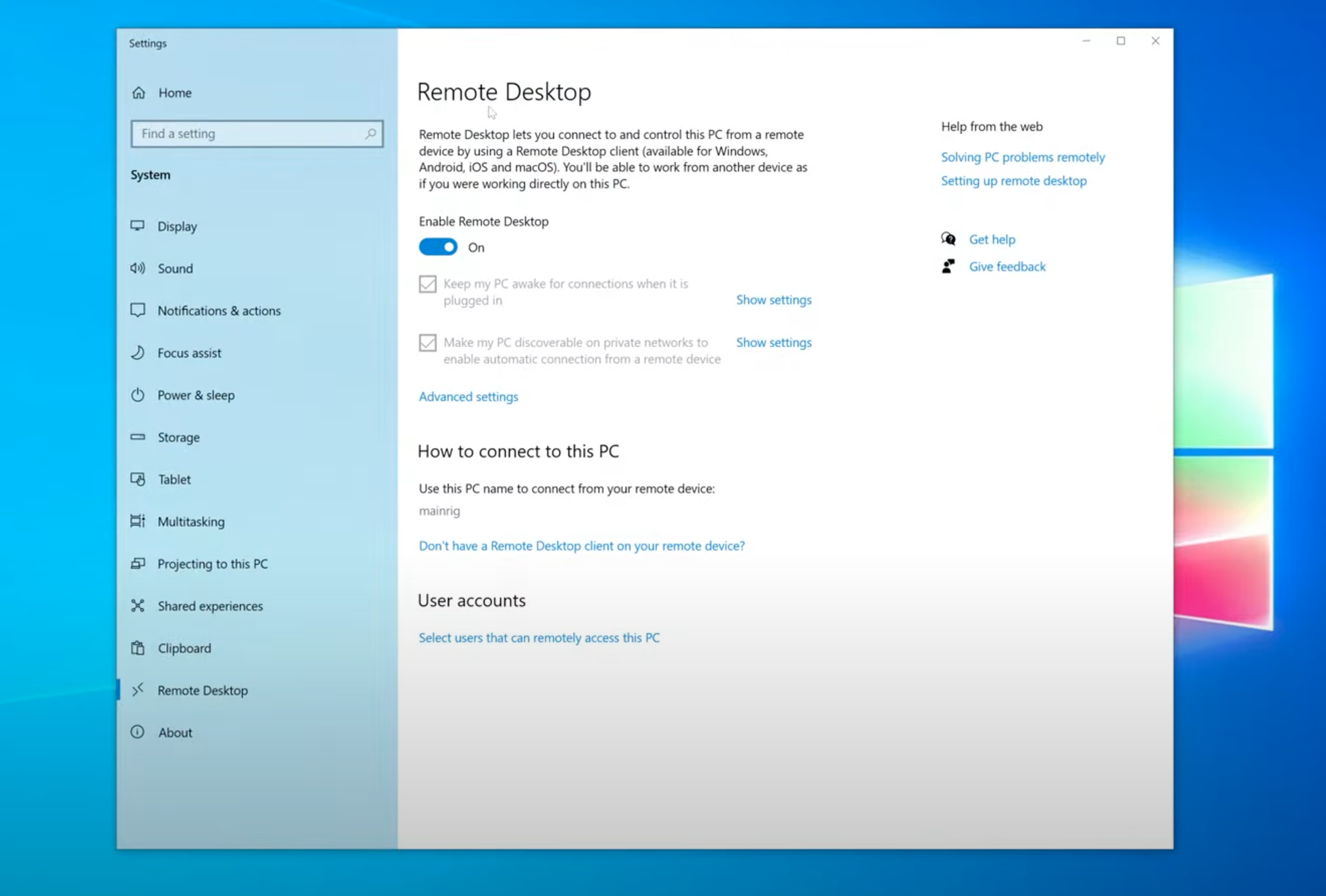
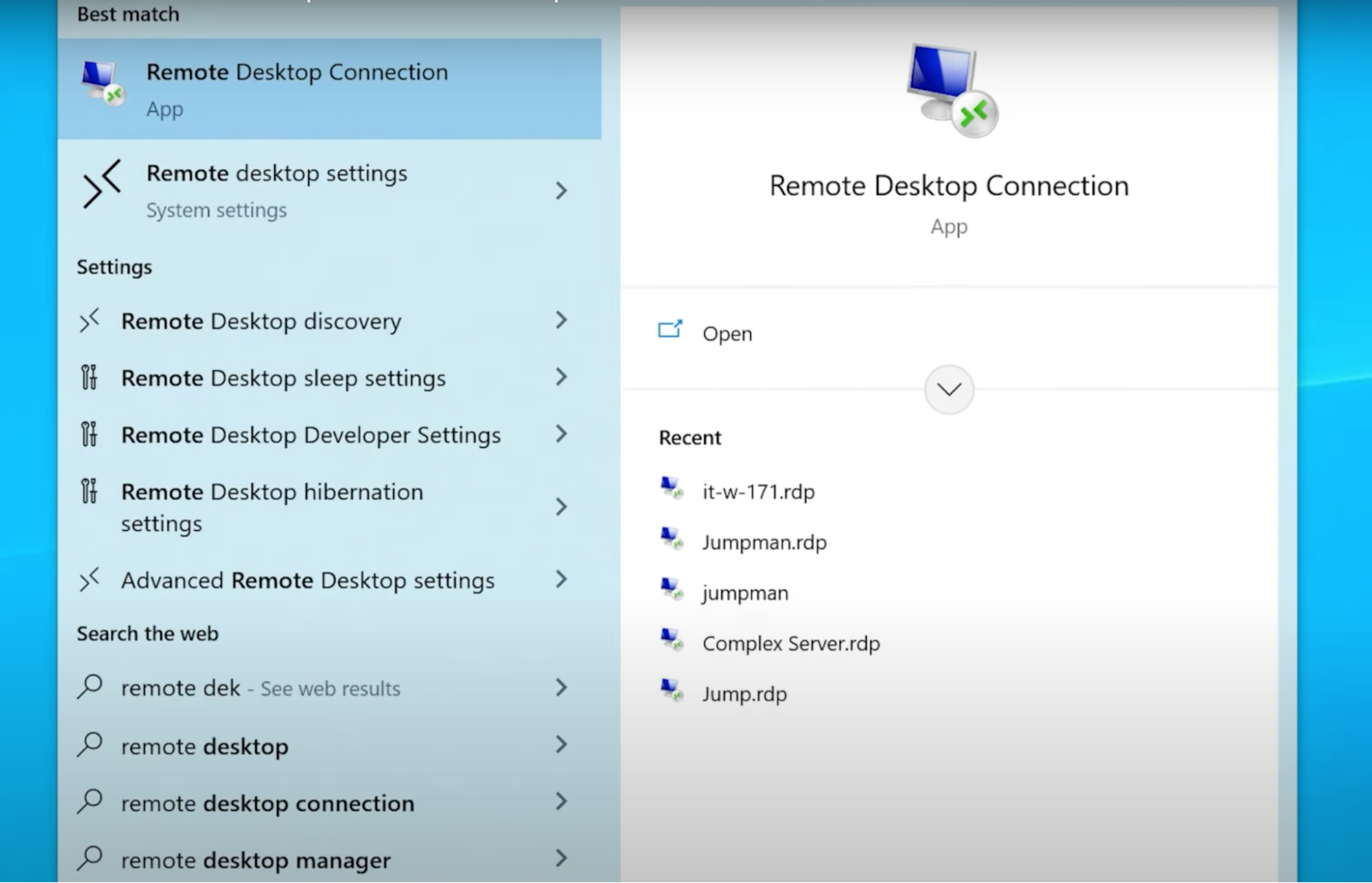
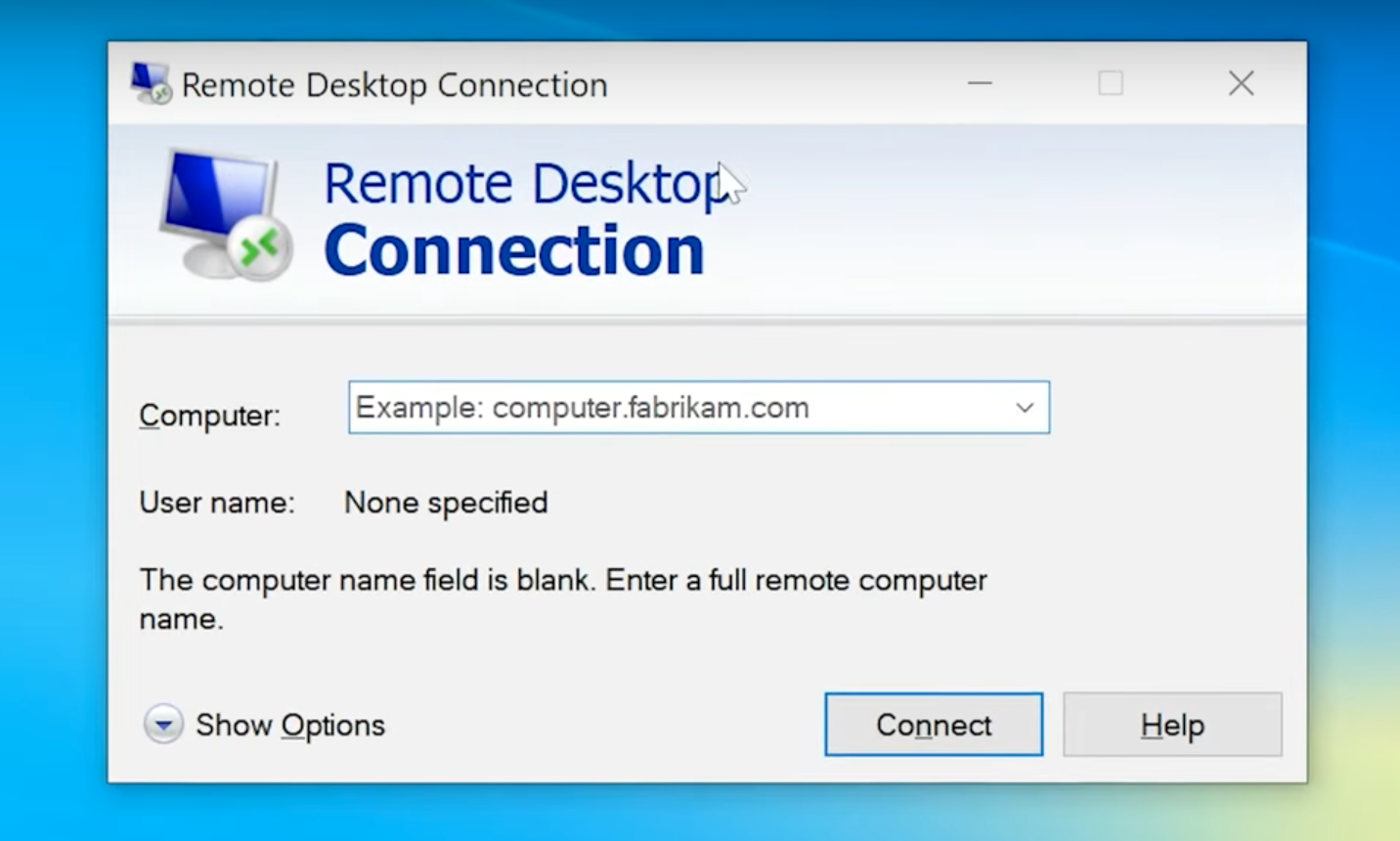
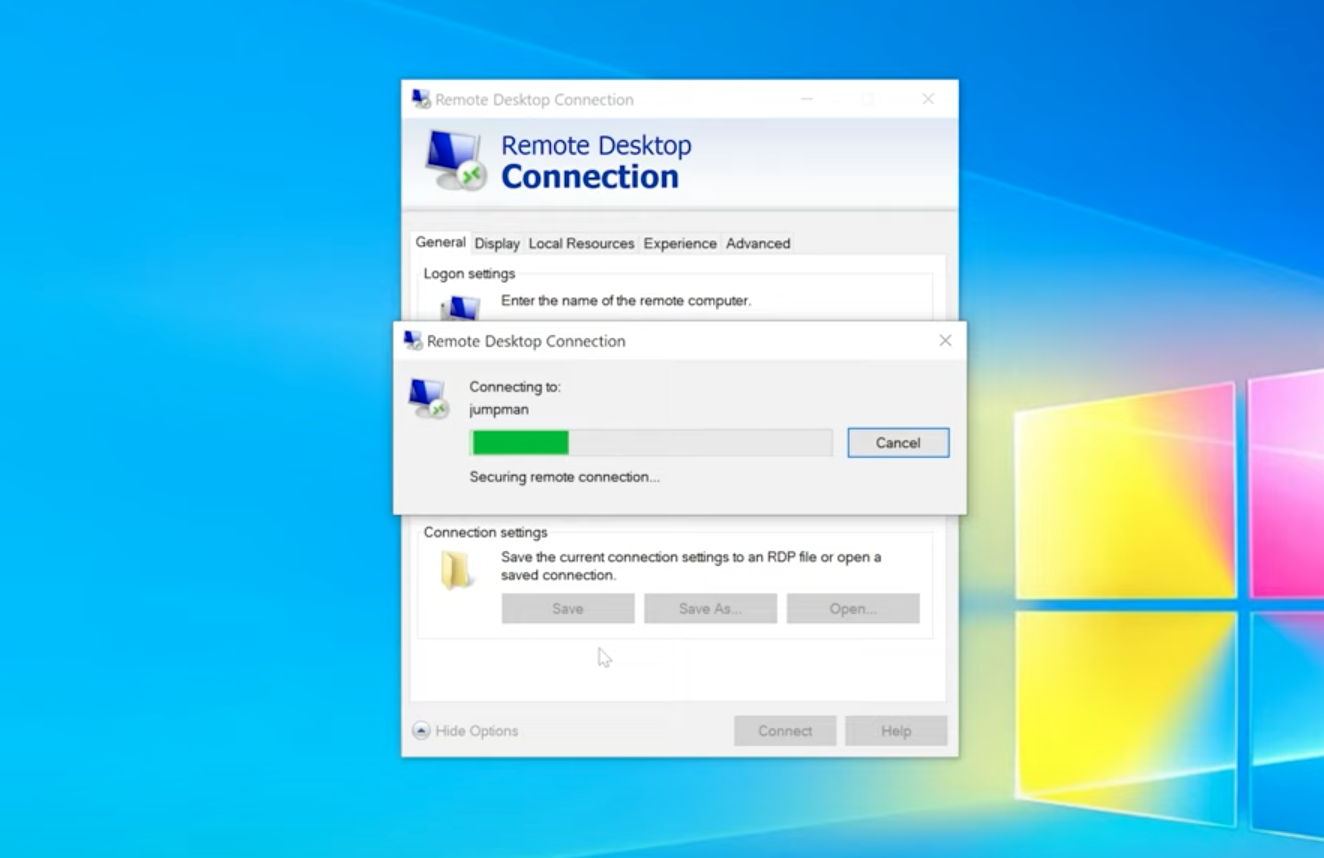
According to HelpWire users, HelpWire is an excellent RDC alternative that provides stable and responsive connections. This impressive speed is attributed to HelpWire’s capability to automatically switch between direct and routed connections. As one user mentioned: